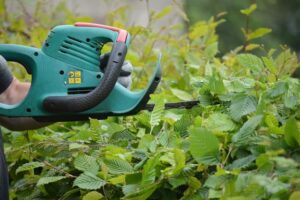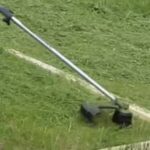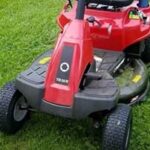As an Amazon Associate, this site earns commissions from qualifying purchases. For more information click here.
All motorized machines are vulnerable to overheating, hedge trimmers included. Whether it is gas, electric or battery powered, the possibility of the motor getting cooked by heat is always there. Using a hedge trimmer in these conditions can cause damage, but with the tips in this post you will learn how to deal with it.
An overworked motor is the most common reason for an overheating hedge trimmer. If the filters are dirty, it will lead to clogging and higher temperature. The ideal range for using hedge trimmers is 40-100 F or 4.4 -37.7 C.
Overworked Engine Motor
Hedge trimmers will overheat if used beyond their capacity. If you run a car constantly at top speed, its engine will wear out quickly. The same applies to these garden tools.
Here are some reminders when using trimmers to do yard work.
Never use a hedge trimmer beyond its maximum cutting capacity. This is expressed in inches or cm. If the blade has a cutting capacity of 1 inch in diameter, do not go over it. Anything larger than that will lead to the motor overheating or permanent damage.
If you are cutting very thick material with your hedge trimmer it could lead to overheating. For the large branches for example, you should use pruning shears or a handsaw.
Do not always run the trimmer at maximum power. If you always drive your car at top speed, the engine heats up quickly. If you do not slow down the engine will overheat, smoke and eventually stop working.
The same rule applies to hedge trimmers. You can use a hedge trimmer to cut at maximum capacity, but not for hours on end. Give the motor time to cool down for a few minutes.
Read the owner’s manual for details on the optimum operating conditions. As much as possible you should follow it. If you have to do a lot of yard maintenance, get a powerful hedge trimmer that can handle heavy duty work.
Filter Dirt Buildup
Hedge trimmers including the DEWALT DCHT820B have filters so air can flow into the engine. Gas models need air in the fuel mixture to run, plus ventilation keeps the motor cool while it runs. The filters also prevent dirt from getting into the engine.
But with constant use these filters will get clogged with dirt and debris. The lack of ventilation is going to raise the temperature inside the engine even before it runs. Once you activate it, expect the temperature to go even higher.
Fuel mixtures need air to ignite. If there is not enough the motor is forced to work harder, and this leads to overheating.
The good news is that air filters are easy to clean. You just have to remove the cover and brush the dirt off the filter. If the filters are too dirty, you can order a replacement. With regular cleaning and maintenance this should not be a major issue.
Temperature is Too Hot
The maximum operating temperature for most hedge trimmers is 32-104 F or 0-40 C. However, running the tool at either end of this range will wear it down quickly.
For the best results you should operate a hedge trimmer in 40-100 F or 4.4 -37.7 C. This is the optimum range so you can run it for as long as needed.
Of course we cannot always count on ideal weather. If it is over 100 F and you need to do some yard work, you can use your hedge trimmer. However you should monitor the motor in case it overheats. If the engine feels too hot, turn it off for a few minutes to cool off.
This is where it pays to have a quality hedge trimmer so you can use it without worry. A nice option is the Black+Decker 20V MAX Cordless Hedge Trimmer as it is easy to use and solidly built.

If you keep running the trimmer it could smoke and cause more serious problems. Just let the trimmer cool down. Do not pour water on the trimmer because the liquid could seep into the motor and damage some parts.
Once the motor has simmered down you can restart it. If the trimmer continues to overheat, turn it off. Check the spark plug for signs of damage. Replace the spark plug and restart the trimmer.
Not Enough Lubrication
When its parts are worn out, there is a tendency for hedge trimmers to overheat or get jammed. Wear and tear is normal, but if your trimmer is new, it probably needs more lubrication.
All engines need lubrication for many reasons, but basically it is about reducing friction. Hedge trimmer engines are made up of many parts. When it runs, these parts move and inter act with each other.
These movements produce friction. Over time, friction increases wear and tear and also heat. Without any lubrication an engine will get too hot and stop working.
There are a lot of lubricants for hedge trimmers available. Apply it every time you use the tool to prevent it from overheating. In addition, lubricants minimize wear and prolongs the life of an engine motor.
Wrong Fuel Mix
Another reason why your hedge trimmer can run too hot is a wrong fuel mix. To be specific, it might be running too lean. By adjusting the mix ratio you can avoid this problem.
2-stroke gas hedge trimmers typically use a 40:1 ratio of oil and gas. Yours might be different so check the manual. If there is not enough oil or gas – or the ratio is off – the engine will not ignite properly. Even if you can get the hedge trimmer to run it will seize at some point.
The only way to fix this is to prepare a new fuel mix. Make sure the ratio is correct before pouring in it the tank.
This video shows you how to add fuel to an Echo hedge trimmer. The process is similar to other hedge trimmer brands too.
Tips for Hedge Trimmer Maintenance
Proper care is needed for all hedge trimmers, especially if you use it constantly. This tool is exposed to the elements and will wear out quickly if not cared for. By regularly maintaining your hedge trimmer, you can prevent overheating and other problems from occurring.
Perform a visual inspection of your hedge trimmer weekly. Look for signs of tear, scratches or any loose screws. You should also check if the screws and bolts are too tight. Adjust them accordingly.
Blade maintenance. Is your trimmer not cutting smoothly? The blade probably needs sharpening. Look also for signs of misalignment. If the hedge trimmer blade is not moving LNK there might be other problems.
Examine the most important parts. These include the latches, locking lever, switches and filters. Fix or replace any damaged parts.
Clean the hedge trimmer after each use. Wipe the dirt off with a damp rag. Remove any debris stuck in the blade teeth. After cleaning, apply lubricant or other maintenance solution on the blade. Turn the trimmer on for a few minutes so the solution is distributed throughout.
Gas Hedge Trimmer Maintenance
- If you are going to store the trimmer for more than 3 months, empty the fuel tank.
- Always check the tank for oil leaks before turning the trimmer on.
- Air filters should be cleaned as often as required. Replace if damaged.
- Never use a hedge trimmer with a broken spark plug. Replace immediately.
Cordless Hedge Trimmer Maintenance
Most cordless hedge trimmers have LED lights that indicate their status. If green, everything is okay, but if red or not lit up, something is wrong. Turn the trimmer off and remove the battery. Look for signs of damage and replace if necessary.
It is good practice to remove the battery when you are not using the tool. Do not leave it in the compartment if you are going to store the trimmer for several months.
Electric Hedge Trimmer Maintenance
- Unplug the hedge trimmer after using it and before cleaning.
- Do not use electric hedge trimmers in rainy weather.
- Check the cord regularly for breaks, scratches and tears.
- Make sure the cord is long enough to meet your needs. Get an extension cord if required.
- Electric motors are sensitive to high temperature. Never let it overheat as this can cause serious damage.

I love the outdoors and all the tools for maintaining gardens, yards and lawns. The only thing I am more passionate about is sharing what I know about garden and outdoor equipment.


